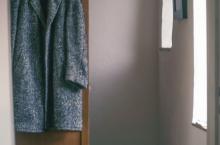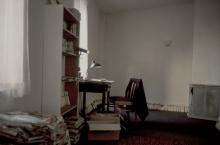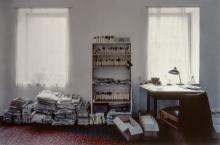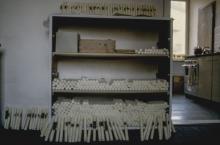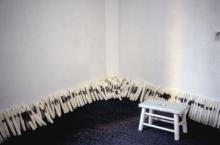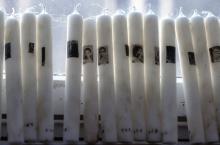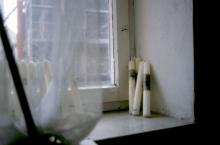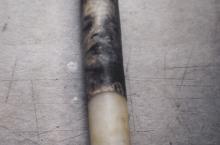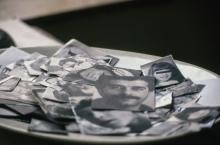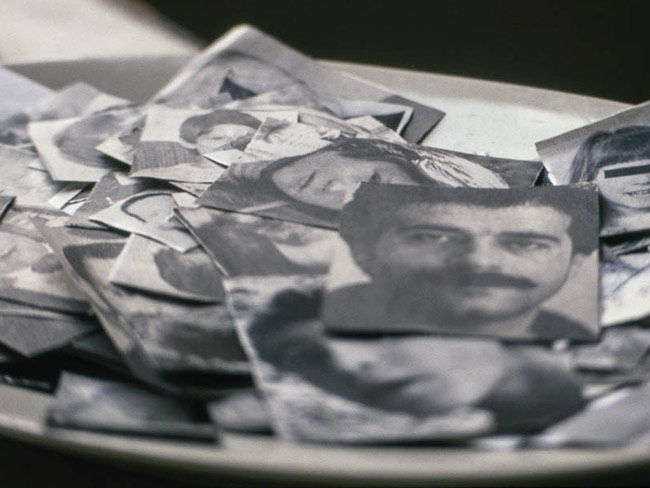
“A candle was dedicated to each victim he could find in the countless newspapers he collected and combed through. He did the same for perpetrators when they were identified. Perhaps he felt that behind every crime, another proceeded?” Iris Häussler
Installed in a rental apartment in the west-end district of Munich, Häussler launched the second iteration* of her art project, “Ou Topos” (no place or nowhere). As public visitors investigated the exhibition site, they would discover signs that pointed to the curious activities being undertaken by the apartment’s fictitious occupant. At first glance the apartment appeared more like an office or workspace that had been temporarily vacated–sparse, unassuming, clean, orderly–rather than a lived-in space. But what work was being done here? And for what purpose?
Rows and rows of white household candles were found lined up along walls, stacked on shelves, tables, cupboards, and in the space under the bed. Strange collections of newspaper and tabloid clippings containing portrait photos were also found. A closer look revealed that each candle was adorned with the photo of either a victim or perpetrator of crime and inscribed with a unique number. Each number referenced the corresponding story of tragic events, which were also summarized and painstakingly recorded in a ruled composition book left open on a desk.
After a period, Häussler added a twist to the project by declaring that the apartment’s contents would be put up for sale and placed a classified ad in the local newspaper. The result drew a different crowd of visitors to the apartment, this time on the hunt for bargains instead of art. Some bargain hunters, when confronted by the contents and the situation, were so disappointed that they demanded their transit fair be paid.

